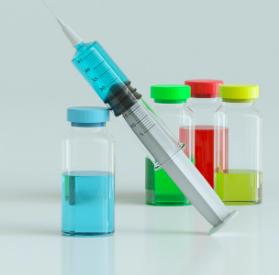Henry I. Miller and Andrew I. Fillat
There is widespread anticipation of vaccines to prevent COVID-19 infections so that Americans can get their lives back to some semblance of normal. More than 50 candidates, made with a variety of technology platforms, are now in clinical trials, 11 in large-scale, late-stage, safety/efficacy testing. During the large Phase 3 trials, which will involve tens of thousands of subjects, researchers will evaluate both the efficacy of the vaccine – that is, its ability to actually prevent infections -- and to detect and quantitate less frequent side effects.
Americans are so desperate to end the need for masks, social distancing, and limited access to restaurants, salons, concerts, and schools that they’ll surely be clamoring for a vaccine as soon as it’s available. Or will they? A Kaiser Family Foundation poll published last month found that only about 42% of Americans would opt for a free COVID-19 vaccination before the presidential election. A similar result emerged from a more recent survey by Morning Consult, which found that only 38% would get a coronavirus vaccine if one became available.
Some of the resistance to the COVID-19 vaccine appears to stem from concerns about “Operation Warp Speed” rushing vaccine development, and from the disinformation promulgated by the anti-vaccine crazies, who have shifted into high gear with all sorts of inaccurate and even bizarre claims.
If the poll numbers hold up, even after vaccines are available, we could see continuing high levels of COVID-19 infections, with sporadic surges above baseline. That could perpetuate the need to wear masks, for social distancing, avoidance of crowds indoors, and so on. It has been estimated that we will need immunity in roughly 70% of the population, through either natural infection or vaccine administration, in order to achieve “herd immunity,” which occurs when a large portion of a community (the herd) becomes immune to a disease, making the spread of disease from person to person unlikely. That protects the whole community — not just those who are immune. Clearly, we will never even approach that, if a significant fraction of the population rejects the vaccine (especially given that no vaccine is a hundred percent effective in vaccinees).
Although prodigious investments by the public and private sectors have been made to develop safe and effective vaccines in record time, it will require the public’s willingness to take them, in order to actually prevent harm and save lives. Therefore, we need an aggressive campaign to educate the public and to eradicate “vaccine hesitancy” as thoroughly as we hope to eliminate COVID-19 itself. The Centers for Disease Control and Prevention (CDC) is now working on a plan to boost “vaccine confidence,” Director Robert Redfield told a Senate committee in June, but we’ve heard nothing more about it since then.
Such a plan should be multi-faceted. First, the mainstream media and Hollywood establishment must be major collaborators in this effort. History shows that, rightly or wrongly, the endorsements of celebrities of various stripes – actors, musicians, athletes, thought leaders, social media influencers, columnists, scientists, and prominent politicians from across the spectrum -- can alter public opinion. Those who have studied vaccine hesitancy urge a non-judgmental approach that emphasizes storytelling and narrative, rather than simply a litany of scientific findings.
Second, the medical profession – individual practitioners, as well as hospitals and clinics -- must play a pivotal role. They should reach out to their patients, explain the importance of vaccination, answer their questions, and assuage their concerns. Local social media are also good platforms for them to inform and interact with the public.
Third, there will be a role as well for the managers of the major social media platforms; fear-mongering about vaccines that have been shown to be safe and effective is anti-social, and should not be permitted. Twitter and Facebook have already made that commitment.
Fourth, it may even be appropriate for the federal government to issue reward debit cards of perhaps $25 to those who are vaccinated, in addition to covering the actual cost of the vaccine (which the feds have already committed to). Free flu shots are common already, so this would just be one additional step justified by the devastating impacts of the COVID-19 pandemic.
Finally, there might be a need for more coercive actions, such as medical facilities, other businesses, and schools requiring vaccination of employees and students. Governments can also mandate vaccination. In 1905, the U.S. Supreme Court (in Jacobson v. Massachusetts) upheld a Massachusetts state statute that during a smallpox epidemic required the entire population to undergo smallpox vaccination or pay a fine. The Court deemed it a valid exercise of a state’s police powers that did not violate the U.S. Constitution’s 14th Amendment’s Due Process Clause, inasmuch as the vaccinations were deemed to be necessary to protect the health of the community.
Absent such a coordinated, multi-faceted effort, it seems doubtful that enough people will, in the short term, seek out one of the new vaccines in a sufficiently timely way to make a dent in the incidence of COVID-19 infections, let alone to approach herd immunity. How tragic it would be if the prodigious efforts to develop the COVID-19 vaccines were for naught, simply because they were rejected by a misguided public. We need to ramp up efforts to encourage vaccination now.
Henry I. Miller, a physician, and molecular biologist is a Senior Fellow at the Pacific Research Institute, and a member of ACSH's Scientific Advisory Board. He was the founding director of the FDA’s Office of Biotechnology and the co-discoverer of a key enzyme in the influenza virus. Andrew I. Fillat spent his career in technology venture capital and information technology companies and is the co-inventor of relational databases.




